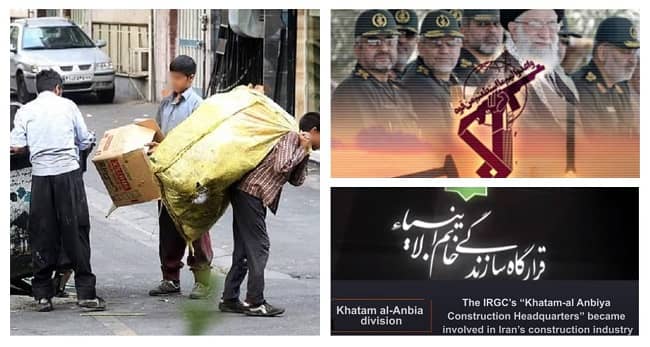The economic crises in Iran have pushed more and more people below the poverty line and spurred the public into a widespread boycott of the presidential election next month.
While Supreme Leader Ali Khamenei needs a high voter turnout to provide legitimacy to his regime amid increased international isolation, the people have been using their near-daily protests to chant that they will not be voting next month because they’ve “heard enough lies” and “have not seen any justice”.
The state-run Mostaghel daily wrote last month: “The presidential elections have the unprecedented situation in terms of people’s unwillingness to participate.”
The election boycott, foreshadowed by the low turnout at the parliamentary elections in February 2020, is not the result of one issue, but rather several important factors; including oppression, human rights abuse, and the lack of democracy. The economic problems were just the last straw and the fact that they are solely the result of regime corruption and mismanagement solidified that the regime was the main abusers of the people.
Let’s look at just some of the economic problems in Iran here.
Former Urban Development Minister Abbas Akhundi admitted last month that inflation has been 18% on average for the past 52 years, which is shocking enough until you consider that essentially the inflation rate is 546845% compared with 1969. He also advised that investment over the past nine years have been at -6.8%, which means that it’s 52% than it was in 2011, while inflation will be over 40% next year compared with 2021, which will only increase the number of people living in absolute poverty.
Meanwhile, Parliament Speaker Mohammad Bagher Ghalibaf said in January: “Our budget’s infrastructure is damaged. Look at the infrastructure of this year’s budget. It is record-breaking for its kind. It indicates there is a 36% difference between [public] salaries and expenses.”
Ghalibaf said in March: “Our problem is not lacking money, and we have problems even when we do have money. On one side, there are mountains of wealth. On the other side, there is poverty.”
In a report from the Parliament’s Research Center, entitled “Image of the country’s economic situation: Challenges and Strategies”, it said:
- Iran’s gross domestic product, the total value of goods and services produced there in one year, fell by about 7.5% in 2019 because of a lack of purchasing power
- Inflation is at 20% per year on average, compared with 3-4% for the world as a whole, giving Iran the fourth-highest inflation rate in the world
- Liquidity has now reached over 2500 thousand billion tomans or 10 times what it was in 1979, while the volume of national production is just five times what it was then. In fact, liquidity growth reached 31% in 2019
- The exchange rate has tanked against foreign currencies
The Iranian Resistance wrote: “The regime has plundered Iran’s national wealth to fund its illicit and malign activities, such as export of terrorism, racing toward a nuclear weapon, and manufacturing ballistic missiles. This is in addition to the regime’s institutionalized corruption, which devours billions of dollars a year. It is now becoming clear why Iranians are willing to boycott the regime’s sham presidential elections.”
